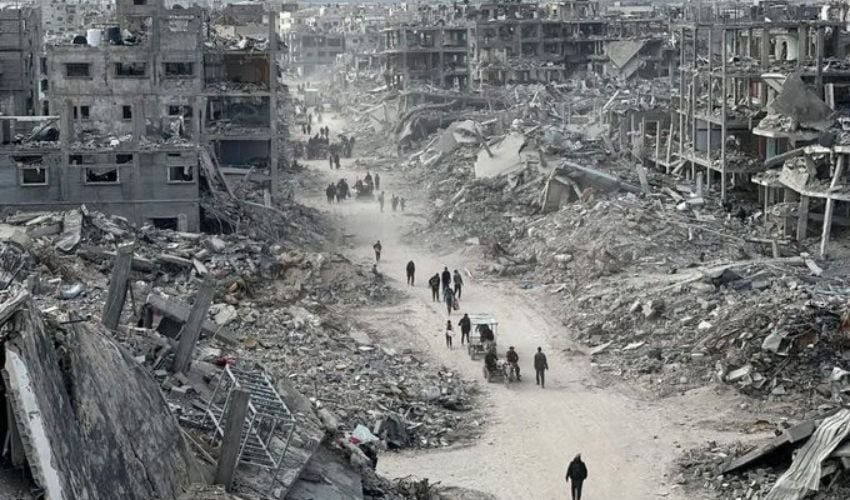A U.S. plan for Gaza, reviewed by Reuters on Friday, proposes a 60-day ceasefire and the release of 28 Israeli hostages, both alive and deceased, within the first week. This would be in exchange for the release of 1,236 Palestinian prisoners and the remains of 180 deceased Palestinians. The document, which states that the plan is guaranteed by U.S. President Donald Trump and mediators Egypt and Qatar, includes sending humanitarian aid to Gaza as soon as Hamas formally agrees to the ceasefire.
The aid will be distributed through the United Nations, the Red Crescent, and other agreed-upon channels. On Thursday, the White House announced that Israel had consented to the U.S. ceasefire proposal. Israeli media reported that Prime Minister Benjamin Netanyahu informed the families of hostages held in Gaza that Israel had accepted the deal presented by President Trump’s Middle East envoy, Steve Witkoff. The Palestinian militant group Hamas told Reuters it was reviewing the plan and would provide a response on Friday or Saturday.
The U.S. plan stipulates that Hamas will release the remaining 30 of the 58 Israeli hostages once a permanent ceasefire is in effect. It also indicates that Israel will cease all military operations in Gaza as soon as the truce commences. The Israeli army will also redeploy its troops in phased stages.
Deep-seated differences between Hamas and Israel have previously hindered attempts to reinstate a ceasefire that broke down in March. Israel has maintained that Hamas must completely disarm, be dismantled as a military and governing force, and return all 58 hostages still held in Gaza before it will agree to end the war. Hamas has rejected the demand to relinquish its weapons and insists that Israel must withdraw its troops from Gaza and commit to ending the conflict.
Israel launched its campaign in Gaza in response to the Hamas attack in its south on October 7, 2023, which killed approximately 1,200 people and resulted in 251 Israelis being taken hostage into Gaza, according to Israeli tallies. The subsequent Israeli military campaign has killed more than 54,000 Palestinians, according to Gaza health officials, and has left the enclave in ruins.
Mounting Pressure
Israel has faced increasing international pressure, with many European countries typically reluctant to openly criticize it now demanding an end to the war and a significant relief effort. Witkoff told reporters on Wednesday that Washington was close to “sending out a new term sheet” regarding a ceasefire between the two sides in the conflict.
“I have some very good feelings about getting to a long-term resolution, temporary ceasefire and a long-term resolution, a peaceful resolution, of that conflict,” Witkoff stated at the time. The 60-day ceasefire, as per the plan, may be extended if negotiations for a permanent ceasefire are not finalized within the stipulated period.
Senior Hamas official Sami Abu Zuhri said on Thursday that the terms of the proposal mirrored Israel’s position and did not include commitments to end the war, withdraw Israeli troops, or allow aid as Hamas has demanded.
The Gaza Humanitarian Foundation (GHF), a private group supported by the United States and endorsed by Israel, expanded its aid distribution to a third site in Gaza on Thursday. Heavily criticized by the United Nations and other aid groups as inadequate and flawed, the GHF began its operation this week in Gaza, where the U.N. has reported that 2 million people are at risk of famine after Israel’s 11-week blockade on aid entering the enclave.
The launch was marred by tumultuous scenes on Tuesday as thousands of Palestinians rushed to distribution points, forcing private security contractors to retreat. The chaotic start to the operation has intensified international pressure on Israel to facilitate more food delivery and halt the fighting in Gaza. GHF has thus far supplied approximately 1.8 million meals and plans to open additional sites in the coming weeks.



